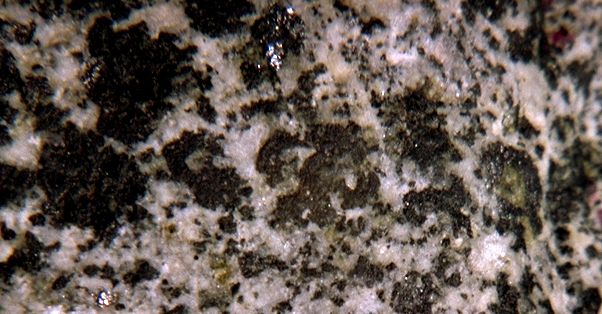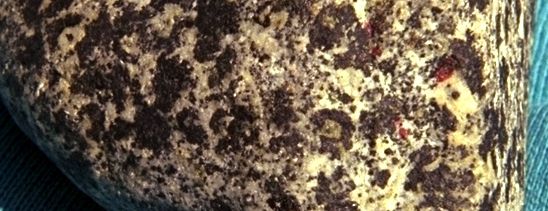Here (in this greatly enlarged detail, taken from an outstanding example of this form of writing) it is possible to see how the glyphic composites of which this form of writing consists are (in this case) being presented as grouped into distinct and comparably sized image-areas. Such a reduction of non-metrical complexity (into a spatially consistent form of presentation) laid the foundation for the evolution of the various standardized image forms used by glyphic types of writing throughout the world...from the Middle East, through Asia, and into Central America.

This in turn formed the basis from which phonetic forms of writing (such as that which I am using here, and which you are reading) were developed.
A little later in this web site, I will show you another aspect of this reduction through simplification, in: the world's oldest cartouche (a type of graphemic composite which was commonly used for presenting the names of Egyptian Pharaohs...one of which was the first section of Egyptian hieroglyphs to be deciphered and translated, through the Rosetta Stone). There, you will see how non-metrical image writing achieved a conceptual stability, in the presentation of identity, that is very similar to the phonetic stability of words-for-objects (signification) which underlies and grounds both our spoken languages and our modern phonetically-based systems of writing.
Far from being illiterate (as Judge McEachern assumed), the First Nations of North America, during pre-Columbian times, were among the most highly literate peoples of the world. They had even developed an accurate system for creating maps of their territories!
By way of example, here is a 'glyph' that depicts the process of taking the sightings which provide those readings needed to accurately localize geographic positions in time (seasonally) and space (territorially). This particular 'glyph' can be found upon a pre-Columbian stone astrolabe... at a certain time of the day, on a certain day of the year, when the sun hits this particular spot on this stone astrolabe at just the right angle.
It is through such remarkable stone-based technologies, and the knowledge which attended such technologies, that the First Nations of North America were able to construct accurate event-maps of their traditional territories LONG before Columbus - or any European nations, for that matter - even existed.

The images of the North American horses shown above are from an era that I have taken to referring to as 'the first material epoch of First Nations culture'. The stone astrolabe is from the second material epoch of First Nations culture; and the skull-shaped event map of the northwest Coast is from the third material epoch. My analysis of the origin of writing traces the path glyphic writing developed upon, through these three epochs of material (stone-oriented) culture; but of course, I can only provide a brief outline and overview of this research within these website pages. It is generally agreed that phonetic writing systems themselves evolved out of glyphic writing systems; but I haven't included any analysis of that rather recent development in my research.
If you would like to go directly to the core of my research concerning this form of image writing, then visit:
For a view of the stone that these examples of non-metrical image writing are taken from,
"Copyright 2000 by John Morton,
on behalf of the First Nations of North America"
ALL RIGHTS RESERVED ("...including copyright over derivations..."): so, you'll have to check with me before using any of my work, and send me some money (IF you can afford to) for anything of mine that you make use of (except as noted below). As I live in Canada, this is the only way I have to fund my research; more on that, later. When an image that I have produced/presented is used without my permission, I (at the very least) cease showing any other aspects of the particular object in question to anyone outside of the First Nations.
Autonomedia, Semiotext[e]: You know the context I am working within so, just use your own good judgment (bearing in mind that):
Members of the First Nations are invited to make use of anything of mine that they choose to. All objects pictured on this web site remain the undisputed collective property of the First Nations in whose territories they originated. All objects pictured herein were found in the gravel of logging roads, below the high tide mark at an ocean's edge, and in similarly disassociated sites. Nothing was disturbed that hadn't already been completely randomized long before I arrived. Many of the objects you will see pictured here would eventually have been crushed by heavy vehicles, pounded by surf, or swept out to sea - had I not happened upon them.






